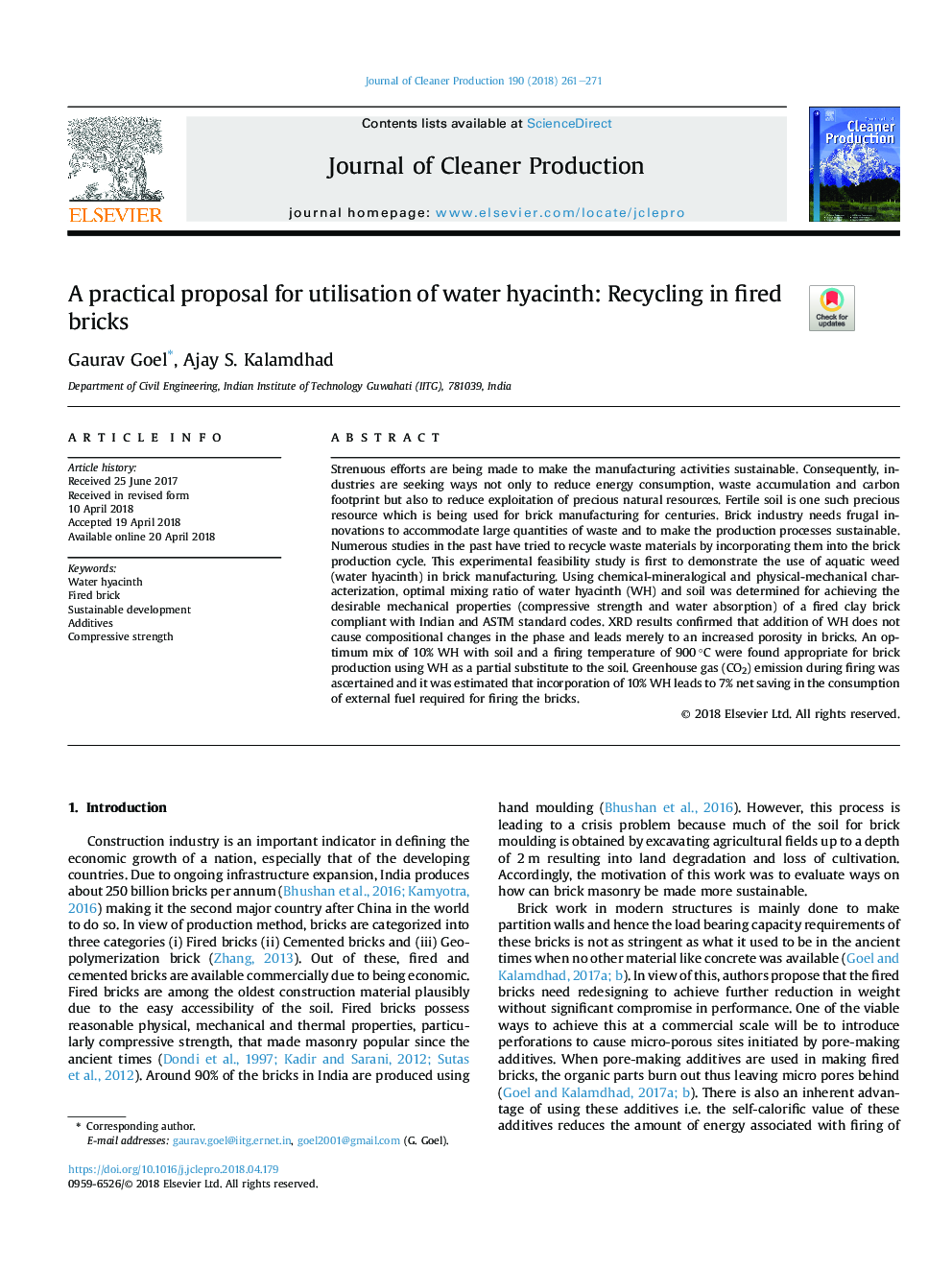| کد مقاله | کد نشریه | سال انتشار | مقاله انگلیسی | نسخه تمام متن |
|---|---|---|---|---|
| 8094917 | 1522063 | 2018 | 11 صفحه PDF | دانلود رایگان |
عنوان انگلیسی مقاله ISI
A practical proposal for utilisation of water hyacinth: Recycling in fired bricks
ترجمه فارسی عنوان
یک پیشنهاد عملی برای استفاده از سنبلچه آب: بازیافت در آجرهای آتش سوزی
دانلود مقاله + سفارش ترجمه
دانلود مقاله ISI انگلیسی
رایگان برای ایرانیان
کلمات کلیدی
سنبلچه آب آجر آتش نشانی توسعه پایدار، افزودنی ها، استحکام فشاری،
موضوعات مرتبط
مهندسی و علوم پایه
مهندسی انرژی
انرژی های تجدید پذیر، توسعه پایدار و محیط زیست
چکیده انگلیسی
Strenuous efforts are being made to make the manufacturing activities sustainable. Consequently, industries are seeking ways not only to reduce energy consumption, waste accumulation and carbon footprint but also to reduce exploitation of precious natural resources. Fertile soil is one such precious resource which is being used for brick manufacturing for centuries. Brick industry needs frugal innovations to accommodate large quantities of waste and to make the production processes sustainable. Numerous studies in the past have tried to recycle waste materials by incorporating them into the brick production cycle. This experimental feasibility study is first to demonstrate the use of aquatic weed (water hyacinth) in brick manufacturing. Using chemical-mineralogical and physical-mechanical characterization, optimal mixing ratio of water hyacinth (WH) and soil was determined for achieving the desirable mechanical properties (compressive strength and water absorption) of a fired clay brick compliant with Indian and ASTM standard codes. XRD results confirmed that addition of WH does not cause compositional changes in the phase and leads merely to an increased porosity in bricks. An optimum mix of 10% WH with soil and a firing temperature of 900â¯Â°C were found appropriate for brick production using WH as a partial substitute to the soil. Greenhouse gas (CO2) emission during firing was ascertained and it was estimated that incorporation of 10% WH leads to 7% net saving in the consumption of external fuel required for firing the bricks.
ناشر
Database: Elsevier - ScienceDirect (ساینس دایرکت)
Journal: Journal of Cleaner Production - Volume 190, 20 July 2018, Pages 261-271
Journal: Journal of Cleaner Production - Volume 190, 20 July 2018, Pages 261-271
نویسندگان
Gaurav Goel, Ajay S. Kalamdhad,
